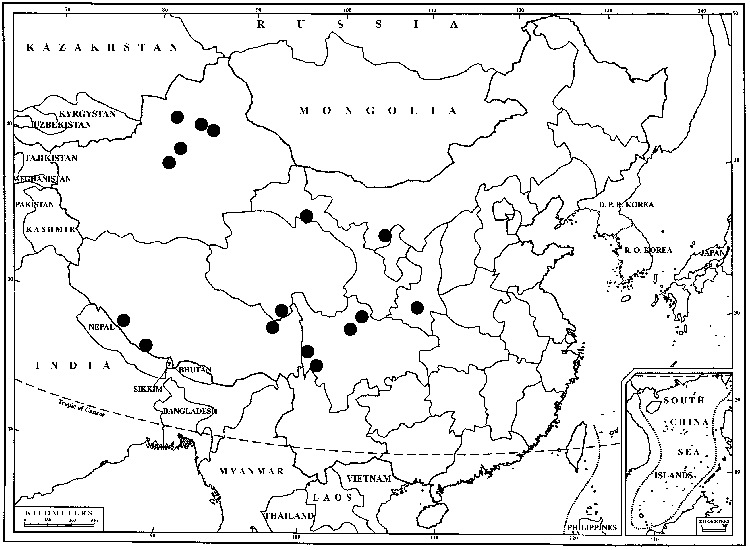Syntrichia ruralis
Index Mus. Pl. Crypt., [2]. 1803,.
Stems 5–15 mm. Leaves clasping at base, infolded and twisted around the stem when dry, widespreading (in smaller forms) to squarrose-recurved when moist, lingulate-ovate, 1.5–3.5 × 0.75–1.25 mm, canaliculate to keeled; margins tightly revolute in the proximal 7/8 or more, entire; apices emarginate to acute; costa excurrent into a serrate (or occasionally only faintly serrulate), hyaline awn that often red or sometimes broadly hyaline at base, weakly to strongly papillose on the abaxial surface and often serrate near the apex because of projecting cell ends, redbrown; basal-cells abruptly differentiated, narrowly rectangular, 35–70 (–90) × 11–18 µm, quadrate to narrowly rectangular at the margins; distal cells quadrate to polygonal, 8–12 µm, with 3–6 papillae per cell, bulging, somewhat obscure. Specialized asexual reproduction absent. Sexual condition dioicous. Seta red, 5–10 mm. Capsule redbrown, 2–3.5 mm, straight, with an abrupt neck; operculum 1.25–1.75 mm, brown; peristome ca. 1.25 mm, the upper divisions twisted ca. 2 turns, red, the basal membrane white, about 1/3 the total length. Spores 11–15 µm, papillose.
Habitat: Dry to moist soil and rock
Elevation: low to high elevations
Distribution

Greenland, Alta., B.C., Nfld. and Labr. (Nfld.), N.S., Ont., Alaska, Ariz., Calif., Colo., Idaho, Maine, Mass., Mich., Mont., Mo., Nev., N.Y., Okla., Oreg., S.Dak., Tex., Utah, Wash., Wyo., Mexico, s South America, Eurasia, s Africa
Discussion
Syntrichia ruralis generally has conspicuously squarrose-recurved leaves when wet, with margins recurved nearly to the apex, distal portions of the costa toothed abaxially because of projecting cell ends, and relatively small laminal cells. The decurrent, hyaline base of the awn sometimes used to distinguish S. ruraliformis is not reliable and can, on occasion, be found in S. princeps, S. papillosissima, and S. norvegica. Specific distinctions in the S. ruralis complex are subtle, for the most part, requiring cross sections of leaves and stems, and careful measurements. The leaves of S. princeps and S. obtusissima are narrowed near the middle, whereas those of S. papillosissima, S. norvegica, and S. ruralis are widest about one-third the way up from the base and then taper to the apex. The stem of S. princeps and S. obtusissima has a strong central strand of thinner-walled cells, the costa has a group of hydroids just abaxial to the guide cells, and the basal cells in the leaf are relatively wide. In S. papillosissima, S. norvegica, and S. ruralis, the stem lacks a central strand, the costa lacks hydroids, and the basal cells in the leaf are relatively narrow.
Selected References
None.